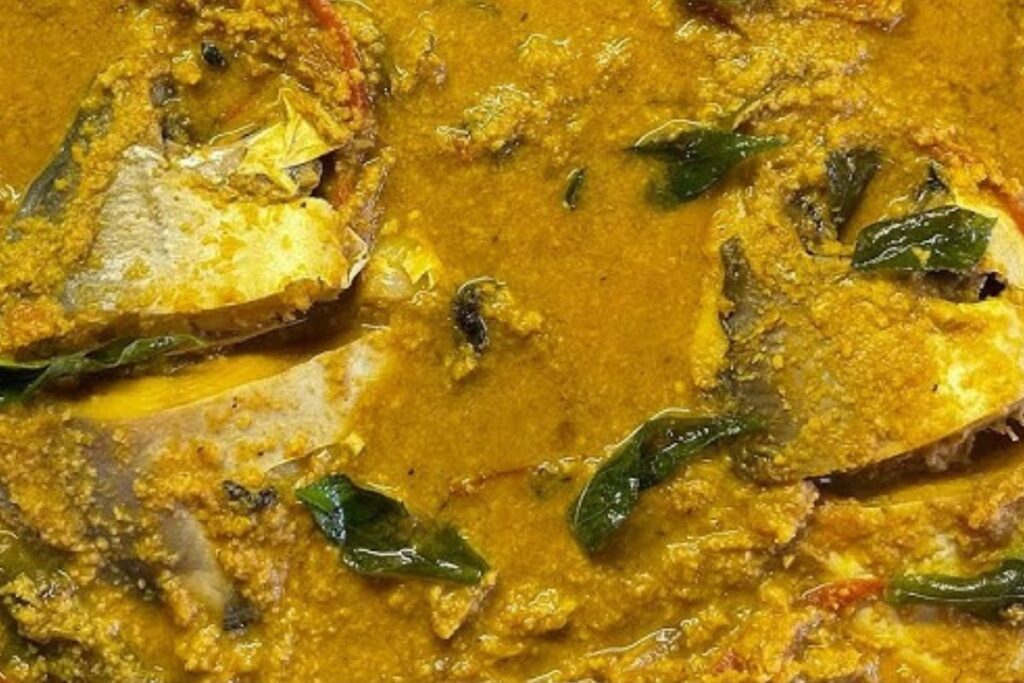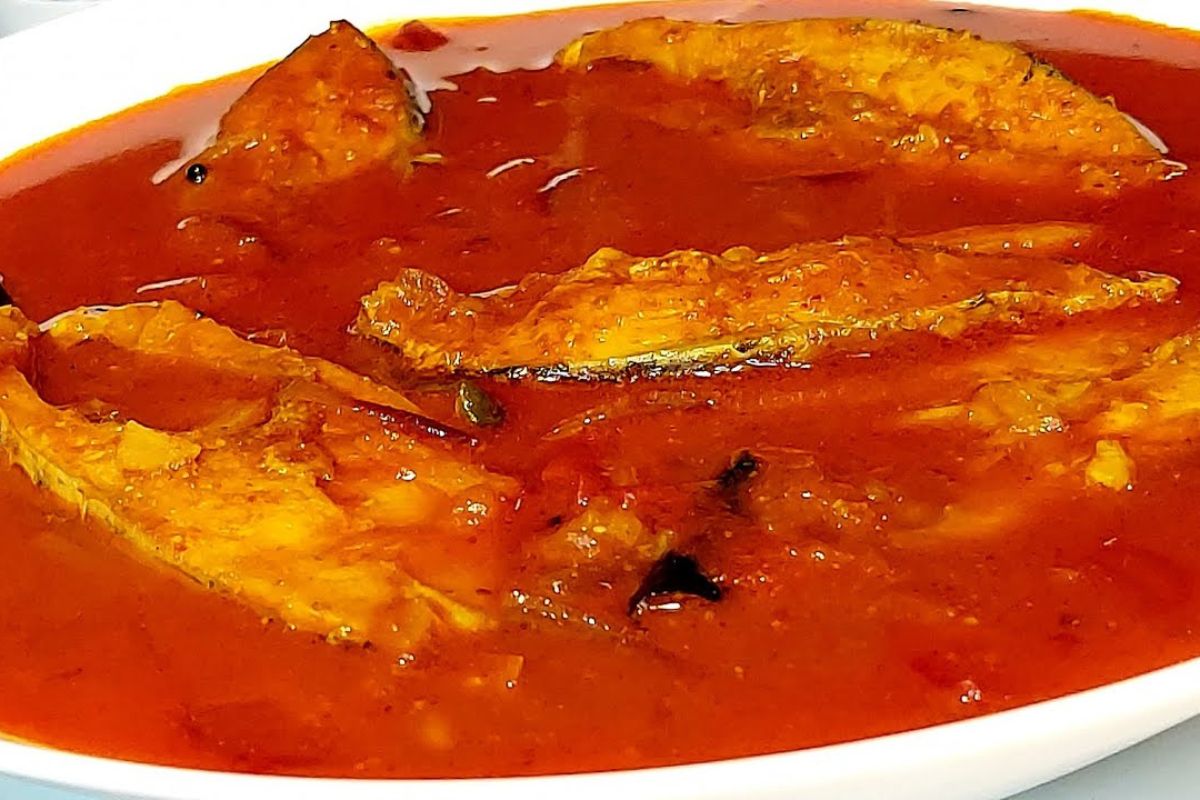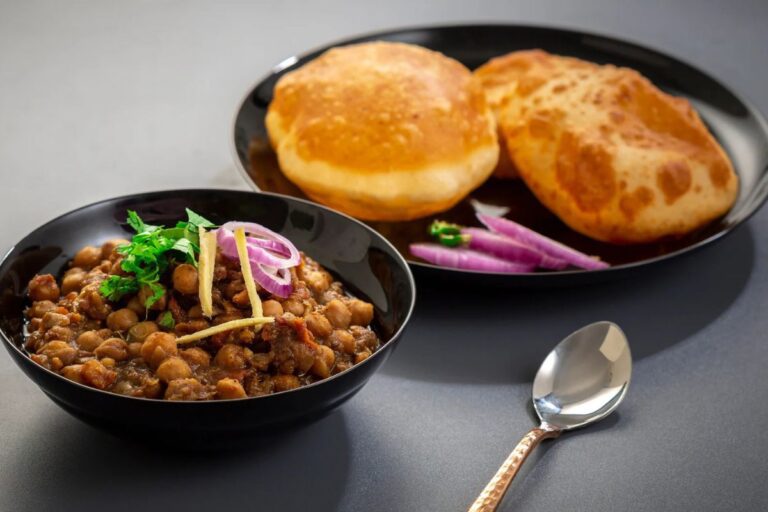Fish Curry Without Coconut Recipe: A Simple and Flavorful Coastal Dish
Fish curry without coconut is a savory and tangy dish that is a staple in many coastal regions of India, particularly in the southern states. Unlike the rich, creamy fish curries made with coconut milk or grated coconut, this version relies on a perfect blend of spices, tomatoes, and tamarind to create a tangy and flavorful curry. The beauty of this curry lies in its simplicity, allowing the natural flavors of the fish to shine through. It’s a perfect choice for those who prefer a lighter, more tangy curry without the richness of coconut.
Let’s dive into the recipe for this easy and delicious Fish Curry Without Coconut, which can be paired with steamed rice or traditional Indian breads like roti or naan.
Ingredients for Fish Curry Without Coconut
- 500 grams fish (preferably firm fish like pomfret, tilapia, or kingfish)
- 2 tablespoons oil (vegetable oil or mustard oil)
- 1 large onion, finely chopped
- 2 tomatoes, pureed or finely chopped
- 2-3 green chilies, slit (optional)
- 1 tablespoon ginger-garlic paste
- 1 teaspoon turmeric powder
- 1 teaspoon red chili powder
- 1 teaspoon coriander powder
- 1/2 teaspoon cumin powder
- 1/2 teaspoon garam masala (optional)
- 1 tablespoon tamarind paste (or a small lemon-sized tamarind ball)
- Salt to taste
- Fresh coriander leaves for garnish
- Water (for adjusting the curry consistency)
How to Make Fish Curry Without Coconut: Step-by-Step Process

1. Prepare the Fish
Clean and cut the fish into medium-sized pieces. If you’re using fish with skin, make sure to remove the scales and clean them properly. You can marinate the fish with a pinch of turmeric and salt for about 15-20 minutes before cooking. This step helps in reducing any strong fishy odor and also adds flavor.
2. Heat Oil and Sauté Onions
In a large pan, heat oil over medium heat. Add the finely chopped onions and sauté them until they turn golden brown. This step is crucial as it adds a deep sweetness to the curry and forms the base for the flavors.
3. Add Ginger-Garlic Paste and Tomatoes
Once the onions are golden, add the ginger-garlic paste and cook for another 1-2 minutes until the raw smell disappears. Add the chopped or pureed tomatoes to the pan. Cook until the tomatoes soften and the oil begins to separate from the masala, about 5-7 minutes.
4. Add the Spices
Add turmeric powder, red chili powder, coriander powder, cumin powder, and salt to the cooked tomato-onion mixture. Stir well and cook the spices for 2-3 minutes until the oil starts separating from the masala.
5. Add Tamarind Paste and Water
Add the tamarind paste (or tamarind pulp) to the curry base and mix well. If using tamarind pulp, soak it in warm water for a few minutes and extract the juice before adding it to the curry. Add about 1 to 1.5 cups of water (adjust for desired curry consistency) and stir everything together. Bring the mixture to a simmer and let it cook for 5-7 minutes to allow the flavors to meld.
6. Add the Fish to the Curry
Carefully drop the fish pieces into the simmering curry. Gently stir to coat the fish in the curry sauce. Let the fish cook in the curry for about 8-10 minutes on low heat. Be cautious not to overcook the fish, as it can become tough and lose its delicate texture. You can check the seasoning at this stage and adjust salt or spice levels if needed.
7. Garnish and Serve
Once the fish is cooked through and the curry has thickened slightly, remove it from the heat. Garnish with fresh coriander leaves for a burst of color and freshness. Serve the Fish Curry Without Coconut with steamed rice, roti, or any bread of your choice.
Tips for Making the Perfect Fish Curry Without Coconut
- Fish Selection: Choose firm fish that can hold up well in the curry, like kingfish, pomfret, or tilapia. Delicate fish like basa or salmon may break apart in the curry.
- Adjust Spice Level: You can easily adjust the spice level by increasing or decreasing the amount of green chilies or red chili powder. For a milder version, use fewer green chilies or skip the red chili powder altogether.
- Tamarind or Lemon: Tamarind is essential in providing a tangy flavor to this curry, but if you don’t have tamarind paste, you can substitute with a tablespoon of lemon juice.
- Cooking Time: Avoid overcooking the fish. The fish should be tender, flaky, and fully cooked, but not dry or tough. Simmering it in the curry sauce for around 8-10 minutes is usually enough.
- Consistency: You can control the consistency of the curry by adjusting the amount of water. If you prefer a thicker gravy, let it cook for a few extra minutes. If you like a lighter, thinner consistency, add more water.
Health Benefits of Fish Curry Without Coconut
- High in Protein: Fish is an excellent source of protein, which is essential for muscle repair, immune function, and overall health.
- Rich in Omega-3 Fatty Acids: Many fish varieties, like pomfret and tilapia, are rich in omega-3 fatty acids, which are beneficial for heart health.
- Low in Calories: This curry is lower in calories compared to coconut-based curries, making it a great option for those looking for a lighter meal without compromising on flavor.
- Antioxidant-Rich: The spices used in this curry, such as turmeric and cumin, have antioxidant properties that help reduce inflammation and promote overall well-being.
How to Serve Fish Curry Without Coconut
- With Rice: Fish curry without coconut pairs perfectly with plain steamed rice or jeera rice. The rice soaks up the flavorful curry, making each bite irresistible.
- With Roti or Paratha: You can also serve this curry with soft roti, naan, or paratha for a satisfying meal.
- With Bread: For a more western-style approach, serve this curry with crusty bread, baguette, or pita to soak up the delicious sauce.
- With Side Dishes: Serve with a side of crispy vegetable fritters, salad, or a cooling cucumber raita to complete the meal.
Fish Curry Without Coconut is a simple yet flavorful dish that highlights the natural taste of fish with a rich, tangy gravy made from tomatoes, spices, and tamarind. It’s perfect for those who prefer a lighter, coconut-free version of fish curry. Easy to prepare, this dish can be enjoyed with rice, roti, or any bread of your choice. Whether you’re craving a comforting meal or exploring a new curry, this recipe is a must-try for seafood lovers.





